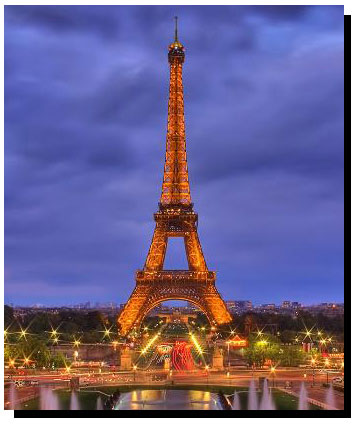Modern
Art “It took me four years to paint like Raphael, but a lifetime to paint like a child” Pablo Picasso Western art had been, from the Renaissance up to the middle of the 19th century, largely guided by representational art or realism. At the opposite pole is abstract art - independence from worldly visual references. Between the two – representational and the abstract – is the whole fantastic panoply of artistic genres and styles.
Avant-Garde On the other side, the relationship between the traditional and the modern is complex as literary scholar Peter Childs illuminates: "There were paradoxical if not opposed trends towards revolutionary and reactionary positions, fear of the new and delight at the disappearance of the old, nihilism and fanatical enthusiasm, creativity and despair." The “City of
Light” The road to “Modern Art” was a gradual metamorphosis. Some art historians place the early origins of modern art as far back to the 18th-century, citing the neoclassical work of Jacques-Louis David’s “The Oath of the Horatii" (1784). Many others reference the controversial 19th-century impressionist art event of Edouard Manet’s “Le Dejeuner Sur L’herbe” (1863). Historian William Everdell claimed that Modernism in painting began with Seurat's Divisionism, the "dots" used to paint "A Sunday Afternoon on the Island of La Grande Jatte" (1886). Lastly, there is the claim that Vincent Van Gogh's "The Starry Night" (1889) was the beginning of all things modern in art. In answering the query ‘where is the home of modern art?”, visual art critic Clement Greenberg comments, "what can be safely called Modernism emerged in the middle of the 19th-century — and rather locally, in France, with Baudelaire in literature and Manet in painting, and perhaps with Flaubert, too, in prose fiction…” Early 20th-century Paris, especially the arrodissement of Montmartre (1900-1930s), became a siren call for the ‘avant-garde’. Some of the innovators who revolutionized the direction of modern arts include: Pablo Picasso (painter), Henri Matisse (painter), Marc Chagall (painter), Igor Stravinsky (composer), Ernest Hemingway (novelist), James Joyce (novelist), Ezra Pound (poetry), Jean Cocteau (novelist, filmmaker), Gertrude Stein (novelist, poet), Vaslav Nijinsky (choreographer), Aaron Copland (composer). Prior to the ‘Montmartre’ scene, two important
approaches in the arts and letters developed in France: Abstract Art began with the assumption that color and shape, not the depiction of the natural world, formed the essential characteristics of art. Key art movements that contributed to the development of Abstract Art include Romanticism, Impressionism and Expressionism. Additionally, the use of photography, which had rendered much of the representational function of visual art obsolete, strongly affected abstract art's development. Overview of Modern Art c. 1900 -
1930 2 - Cubism 3 - Expressionism 4 - Futurism 5 – De Stijl
7 – Surrealism 9 – Pop Art 10 – Op Art 11 - Minimalism
|

